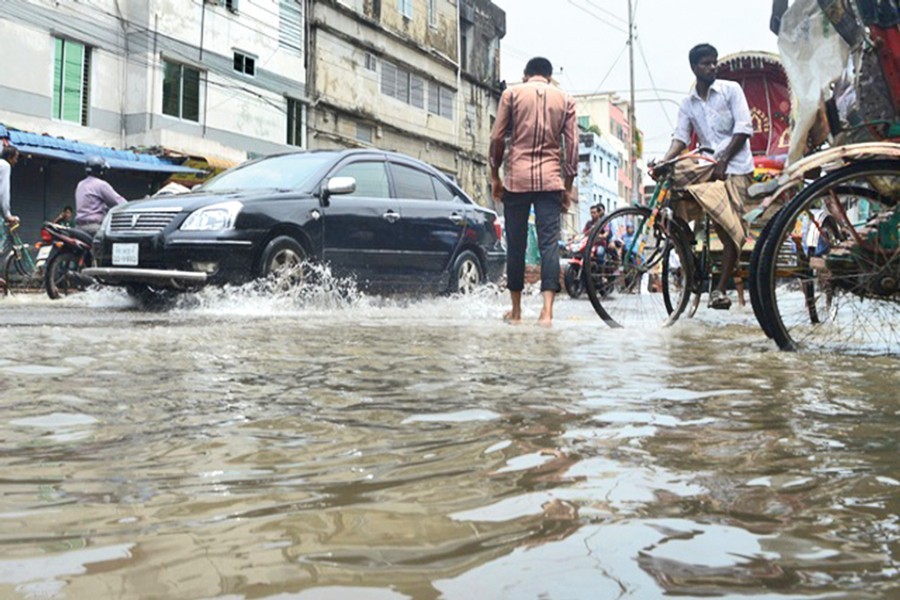Dhaka and Chittagong nowadays are not alone in going through the ordeal of waterlogging. With urban development taking place under no well formulated plan, newer cities and towns are falling in the grip of waterlogging. Low-lying areas and the major roads of these cities and towns go under water, premises of offices and educational institutions remain submerged for days, transports and pedestrians struggle hard to reach destinations. It appears that the factors causing Dhaka's waterlogging have virtually been made to replicate in the urban points outside the capital. These cities and towns include divisional and district headquarters, upazila towns as well as busy river ports and trade centres.
Like Dhaka, many of these urban areas stand on large and small rivers. A few of these towns are hemmed in by one or more rivers and their tributaries and distributaries. Thanks to reckless encroachment of these rivers and man-made impediments created to their flows, water overflows during the monsoon. A large volume of the excess water from the rain-fed rivers swamps the areas on their banks. The greater danger is posed by the moribund in-city natural water channels, and the collapsing drainage. As has been seen with the Buriganga and the three other Dhaka rivers, the choked canals and drains in these cities, too, cannot carry the rainwater to the nearby rivers. What follows is the spilling over of water into the various neighbourhoods of these towns. It is mainly riverbank encroachment and the grossly inept drainage management, coupled with canal-filling in cases, which is being held responsible for waterlogging in the smaller cities. The situation, veritably, is an extended tale of the capital.
While singling out the causes of waterlogging, experts identify haphazard urbanisation, rising population and faulty drainage. In the context of Bangladesh there are other less visible, but important nonetheless, reasons behind this annual scourge. That unplanned urbanisation has a major role in the deterioration of drainage in the emerging cities is implied. Developers indiscriminately landfill the low-lying water retention areas or water bodies all around.
As the capital's waterlogging situation continues to worsen, the collapse of its overall drainage comes to the fore. This decades-old urban backdrop also features a lot of concomitant infrastructural shortcomings. When the country's capital, a feverishly growing metropolis, remains plagued with glaring infrastructural lapses the scourge of perennial waterlogging cannot be expected to go away overnight. With the outlying cities and towns viewing the capital as a model in their long-term planning, one cannot expect anything innovative and people-friendly from them. The whole urban policy making and the operational phase of Bangladesh are hinged on the nation's centre. The resultant newer cities and towns thus cannot make much of a difference. By making a break with the traditional style of development, the newly emerged cities can prove themselves a pioneer of new-age urban growth. Dealing with the recurrent socio-economic dampers created by waterlogging is no herculean task. This is achievable even in the resource-constrained Bangladesh reality.


